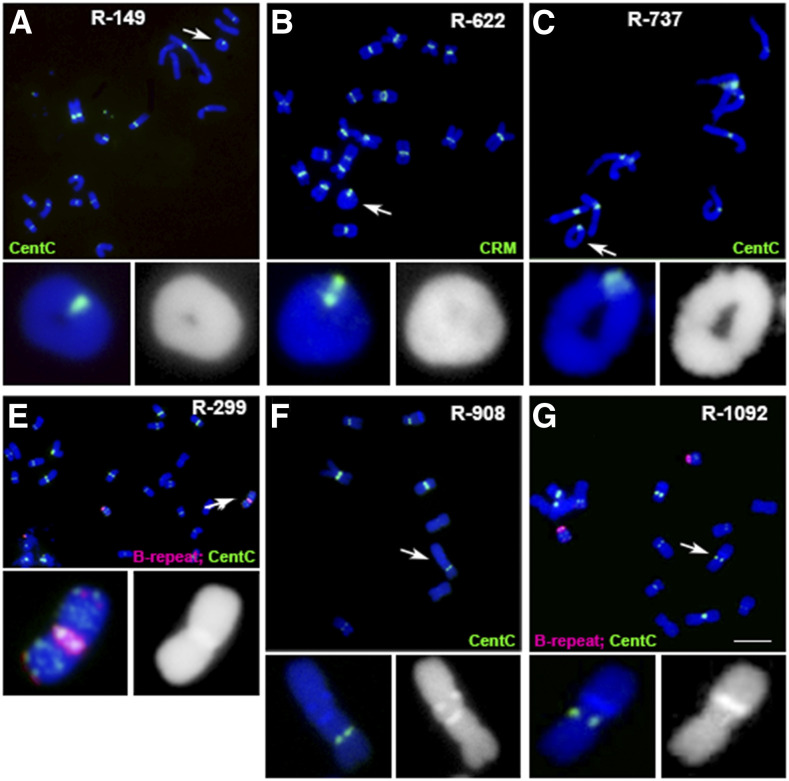Figure 3.
Rings and Other Rearrangements.
When two breaks occur in a chromosome on opposite sides of a centromere and fusion includes the centromere, a ring chromosome results. The following are examples observed:
(A) to (C) Different sizes of ring chromosomes were identified. These ring chromosomes are unlikely to be transmitted stably in most cases and break and rejoin during development (McClintock, 1932). Changes in the karyotype have been found in several A-chromosomes, according to the locations of knob heterochromatin regions on the chromosomes. In normal cells, knob regions are located at the end or toward the end of chromosomal arms. In (A) and (C) green signals, CentC. In (B), green signals, CRM.
(D) In event R-299, the iso-B chromosome may have been generated by fusion of the two broken centromere regions of two B chromosomes after pollen irradiation.
(E) In event R-908, there is a long chromosomal arm with two knob regions positioned near the middle of the long arm, which might have resulted from fusion of two chromosomal fragments. Green signals, CentC.
(F) In event R-1092, the long arm of one A chromosome may have an inversion to transfer the knob region near to the centromere.
(D) and (F) Magenta and green signals, B-repeat and CentC, respectively. Blue, chromosomes counterstained with DAPI (but shown in grayscale in the insets for better visualization of the primary constrictions and knob heterochromatin). Scale bar = 10 μm.

